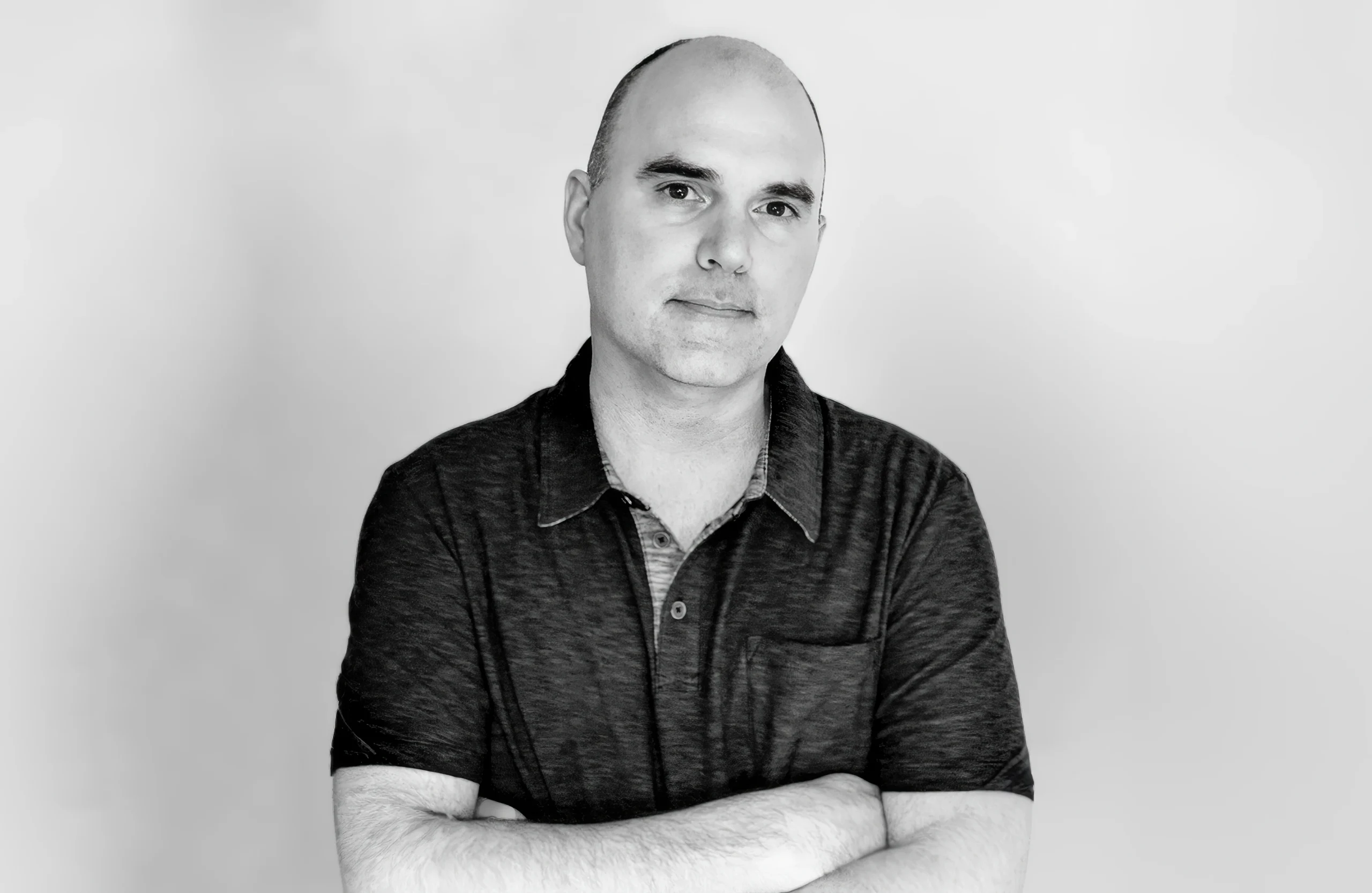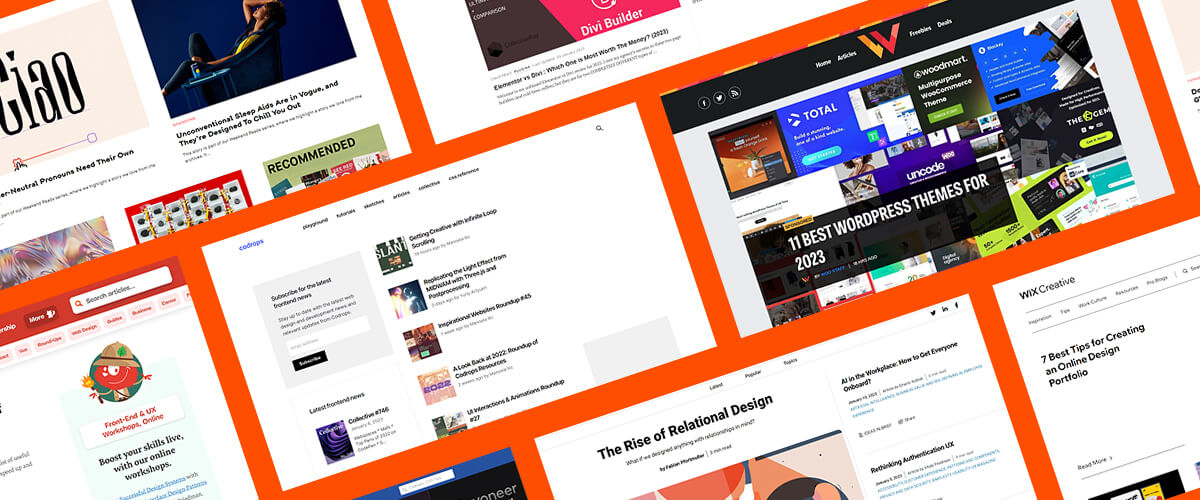I’ve wasted probably $200,000 on designers who had beautiful portfolios but couldn’t deliver business results.
Yeah, you read that right. And I’m probably being conservative with that number.
Believe me when I say this: After hiring over 100 designers in 20 years, the best ones don’t create the prettiest websites. They create the ones that actually make money.
This post is for two audiences. If you’re hiring designers and tired of pretty pixels that don’t convert, this is for you. If you’re a designer who wants to actually get hired and keep clients happy, keep reading.
Here’s what I’ve learned the hard way.
The expensive problem nobody talks about
Most designers are trained to impress other designers.
Stop it.
They chase aesthetic perfection, trending styles, and peer validation. They create gorgeous interfaces that get featured on design blogs but fail basic business objectives.
I call this “designing for designers,” and it’s killing both agencies and design careers.
Here’s the thing: I’ve seen this pattern destroy agency-client relationships more times than I can count. A designer spends weeks perfecting a homepage hero section. Custom animations, perfect typography, cutting-edge interactions. Other designers love it.
The client? Their conversion rate drops 40%.
Why? Because visitors can’t figure out what the company actually does.
(And before you ask, yes, I’ve hired these designers. Multiple times. I’m a slow learner sometimes.)
I’ve watched designers like this burn through multiple agencies. They’re talented, probably winning awards somewhere right now. But they can’t connect design to business outcomes. And that disconnect? It’s expensive for everyone involved.
Or take another pattern I see constantly. Designer redesigns an e-commerce site with a minimalist aesthetic. Beautiful negative space, subtle navigation, elegant product displays.
Sales tank because customers can’t find the “Add to Cart” button.
You know what kills me about this? Everyone involved could see it was beautiful. Awards committees loved it. Other designers praised it. But actual customers? They just wanted to buy something and couldn’t figure out how.
Listen, I’m not saying aesthetics don’t matter. They do. But aesthetics without strategy is just expensive wallpaper.
What business-focused web design actually means
Business-focused designers think differently from the first sketch.
They don’t start with “what looks good?”
They start with “what needs to happen here?”
The reality is, there’s a fundamental difference in how these designers approach every project. Traditional designers are thinking about visual impact. What’s trending on design sites. How to push creative boundaries. What’ll impress their peers.
Wrong approach.
Business-focused designers? They’re obsessed with different questions entirely.
What action do we want visitors to take? (And I mean specifically – not just “engage with the brand”)
What’s stopping them from taking that action? (Is it confusion? Trust? Technical barriers?)
How can design remove those barriers? (Through clarity, not just beauty)
What would make this convert better? (Based on data, not opinions)
Both types can create beautiful, professional designs. But only one consistently delivers results that matter to the business.
What’s actually happening is that one group designs for other designers’ approval. The other designs for business growth. Huge difference.
And constraints? They see them as creative challenges, not roadblocks. Budget limitations force clever solutions. Brand guidelines create focus. Technical requirements spark innovation.
You know what changed my whole perspective on this? After years of hiring the wrong designers, I started paying attention to which ones my clients actually requested for repeat projects.
It was never the award winners. It was always the ones who asked about business goals first.
How to hire a web designer who gets business results
When I interview designers now, I don’t start with their portfolio.
I start with questions that reveal how they think.
Here’s my favorite: “A client says their website needs more energy. Walk me through your response.”
Listen to what comes next. Really listen.
Bad designers jump straight to solutions. “I’d add some animations and brighter colors to make it pop.”
Good designers dig deeper. “I’d first ask what ‘energy’ means to them and what business problem they’re trying to solve. Are visitors not engaging? Is the brand feeling outdated? Once I understand the real issue, I can propose design solutions that address it.”
See the difference?
One assumes. One investigates.
(BTW – if a designer ever uses the phrase “make it pop” unironically, that’s your cue to end the interview)
Here’s another killer question: “How do you measure the success of your designs?”
If they talk about client satisfaction, positive feedback, or design quality, that’s a red flag.
If they say something like “It depends on the project goals. For an e-commerce site, I’d track conversion rates and average order value. For a SaaS landing page, I’d measure demo requests or trial signups” — now we’re talking.
But my absolute favorite? “Show me a project where your design didn’t work. What happened?”
Bad designers make excuses or blame the client.
Good designers own it. They explain what they learned and how they’d approach it differently. The best ones? They actually get excited talking about their failures because they learned so much.
I once interviewed a designer who said, “I designed this beautiful dashboard, but users kept calling support because they couldn’t find basic features. I realized I’d prioritized aesthetics over usability. Now I always do user testing before finalizing designs.”
Hired them on the spot. They’re still with me five years later.
Red flags when hiring designers
After 100+ hires, certain patterns predict failure every single time.
Let me paint you a picture of portfolios that should worry you. All visual, no strategy explanation. Pretty pictures everywhere but zero context about the problem being solved. No mention of business outcomes.
That’s backwards.
You see every project in a different style? They’re chasing trends, not solving problems.
They only show final designs? No process, no thinking, no iterations. That tells me they’re hiding their actual work process (or don’t have one).
Focus on awards instead of results? Awards don’t pay bills. Conversions do.
Communication red flags hit different. Can’t explain design decisions without jargon? Problem. Defensive about feedback? They’re emotionally tied to aesthetics, not outcomes. Talks more about tools than strategy? Not ready for client work.
(Trust me, I’ve sat through enough painful client meetings to spot these patterns early)
Process warning signs are equally telling. Good designers ask about business objectives first. Bad ones jump straight to visual solutions. “I have some ideas already!” No, you don’t. You haven’t asked enough questions yet.
Watch for designers who treat constraints like personal insults. Experienced designers know constraints breed creativity. The unlimited budget projects? Those usually produce the most boring work.
What to look for instead
The designers who succeed in my agency (and stick around for years) share specific traits that set them apart.
They ask business questions first. Not just surface stuff like “what’s your budget?” but real strategic questions. They want to understand conversion goals, user behavior, success metrics.
They sound more like consultants who happen to design.
Why does this matter so much? Think about it. EVERY design decision either supports or undermines your business goals. When a designer understands those goals deeply, every pixel has purpose. Every color choice, every bit of spacing, every interaction serves the bigger objective. That’s results-driven design in action.
(This is also why these designers can charge more. They’re not selling decoration. They’re selling business outcomes)
They show process, not just pixels. Their case studies read like detective stories. Here was the mystery (the business challenge). Here’s how I investigated (research and discovery). Here’s what I uncovered (insights). Here’s how I solved it (design decisions). Here’s what happened (results).
This tells me they can think strategically, not just make things pretty.
And here’s the key: They measure success in business terms.
Instead of “the client loved it,” they say “bounce rate decreased 25%” or “demo requests increased 3x.” That’s design that converts.
Know what’s even better? When they show me failed projects that they turned around. One designer showed me a project where conversions actually dropped after their initial design. But they’d set up proper tracking, identified the issue, made adjustments, and turned it around within a month.
That’s the kind of thinking that builds long-term client relationships.
They embrace constraints too. The best designer I ever worked with told me, “Unlimited budgets make lazy designers. Constraints make creative ones.”
She was right. I’ve seen million-dollar projects produce generic garbage and shoestring budgets create brilliant solutions.
They communicate without jargon. They can explain complex design decisions to a CEO who wouldn’t know Figma from a fig tree. They translate design into business impact.
Those are the ones clients ask for by name.
Now, if you’re a designer reading this wondering how to stand out in a sea of pretty portfolios — this next part is for you.
For designers: How to become business-focused
If you’re a designer reading this, listen up.
The market doesn’t need more pixel pushers. It needs design thinkers who understand business.
Here’s how to make the shift.
Reframe your portfolio
Stop leading with visuals. Start with problems and results.
Don’t write “Homepage redesign for tech startup.”
That tells me nothing. Every designer has done a homepage redesign.
Write “Increased trial signups 47% by simplifying the value proposition and streamlining the signup flow.”
Now I’m interested. Now you’re speaking my language.
But here’s what most designers miss: You need to explain your thinking process. Not just what you did, but why you did it. Walk me through your brain.
“Research showed visitors were confused about pricing. They’d click around looking for clear information and leave frustrated. I redesigned the pricing section to answer the three questions users asked most: How much? What’s included? Can I change plans? Result: Trial signups increased 47% in the first month.”
That’s a case study that gets you hired.
Show the business challenge first. Then your research and discovery process. Then your design decisions (and why you made them). Then the results.
Don’t list features you designed. Nobody cares that you “designed a responsive navigation system.” Explain why that navigation system helped users find what they needed 40% faster.
I’ve seen designers transform their careers just by changing how they present their work. Same projects, different framing, completely different opportunities.
Quick portfolio tips that actually matter
Since we’re talking about portfolios, here’s what separates the good from the great:
DO: Show the business problem first, then your solution
DON’T: Lead with pretty mockups
DO: Include real metrics and outcomes
DON’T: Use vague phrases like “increased engagement”
DO: Explain your thinking and process
DON’T: Just show final designs
DO: Admit when something didn’t work and what you learned
DON’T: Pretend every project was perfect
DO: Write case studies that non-designers can understand
DON’T: Use design jargon to sound smart
Remember: Your portfolio should prove you can drive business results, not just make pretty pixels. Don’t let a shitty portfolio kill your chances before you even get in the room.
Change how you talk about design
Practice explaining your work without design terms.
This isn’t dumbing it down. It’s speaking the language of results.
Not “I improved the visual hierarchy.”
Say “I made it clearer what visitors should do first.”
See the difference? One is designer talk. One gets you hired.
Not “I created a cohesive design system.”
Say “I made the experience consistent so users feel confident clicking around.”
Not “I used better typography.”
Say “I made the content easier to read, so people actually finish articles.”
(Quick test: If your mom doesn’t understand your explanation, neither will your client)
When I started doing this, something weird happened. Clients started trusting me more. They felt like I understood their business, not just their brand guidelines. They started asking for my opinion on business decisions, not just design ones.
Start measuring what matters
For every project, track three things:
What was the business goal? (Specific, measurable goals – not “improve user experience”)
What metrics could measure success? (Real numbers you can track)
What actually happened after launch? (The good, bad, and ugly)
Even if you don’t have access to all the data, asking about results shows you think beyond pixels.
Here’s a hack that’s worked for dozens of designers I’ve mentored: Three months after launching any project, email the client. “Hey, I’m updating my portfolio. How did that redesign impact your business? Any metrics you can share?”
Most won’t have exact numbers. But some will. And those become your star case studies.
Believe me when I say this — clients notice when you care about their business outcomes. It’s so rare, you’ll stand out immediately.
Ask better questions in interviews
Show you’re business-focused from the first conversation.
Don’t ask “What’s your design style preference?”
Ask “What are the main actions you want visitors to take?”
Don’t ask “What are your brand colors?”
Ask “How do you currently measure website success?”
Don’t ask “Do you have design examples you like?”
Ask “What’s the lifetime value of a customer for you?”
These questions immediately separate you from designers only interested in making pretty things.
Oh, and here’s a power move: Ask “What are the biggest drop-off points in your funnel right now?”
Most business owners don’t expect designers to know what a funnel is. When you do, you’re instantly elevated from vendor to partner.
(I stole this question from a designer who charged three times my rate. Now I know why)
Why AI makes business focus essential
Here’s what’s wild about AI in design.
It’s getting scary good at the technical stuff. AI can generate layouts, write CSS, build color palettes, even animate interactions.
I use AI tools daily. They handle the grunt work so I can focus on strategy.
But here’s what AI can’t do (and probably never will).
AI can’t sit in a meeting and notice the CEO is worried about customer retention but won’t say it directly. It can’t read between the lines when a client says “make it pop” but really means “I’m scared customers don’t trust us.”
It can’t understand why a law firm needs to feel established and trustworthy while a gaming startup needs to feel cutting-edge and rebellious. Those aren’t design decisions. They’re human insights based on cultural context AI doesn’t have.
It can’t make the strategic decision to simplify when everyone else is adding features. It can’t push back when a client’s request would hurt their business.
The designers getting hired in 2025 aren’t competing on technical skills. Anyone can prompt AI for a layout.
They’re winning because they understand business context and can make strategic decisions AI can’t.
Want to know the quickest way to stand out? Stop thinking like a designer. Start thinking like a business owner who happens to design.
Business-focused designers use AI as a production assistant while they focus on what matters: understanding the client’s real problems and designing solutions that work.
That’s the moat AI can’t cross. At least not anytime soon.
The bottom line
Beautiful designs that don’t convert are just expensive decoration.
And you wonder why so many businesses treat design as a cost center instead of a growth driver?
For hiring managers: Stop hiring based on pretty portfolios. Start hiring based on business thinking. The right designer will ask about your conversion rates before they ask about your brand colors.
For designers: Stop designing for other designers’ approval. Start designing for business results. Your portfolio should showcase outcomes, not just outputs.
The market is flooded with designers who can make things look good.
But businesses need designers who can make things work.
That’s the difference between a designer and a business partner who happens to design.
And in a world where AI can handle the technical execution, it’s the only difference that matters.
BTW – if you’re a designer who just read this and thought “but what about pushing creative boundaries?” you’re missing the point. The biggest creative challenge is making something beautiful that also drives revenue. That’s the bar now. Everything else is just playing around.




